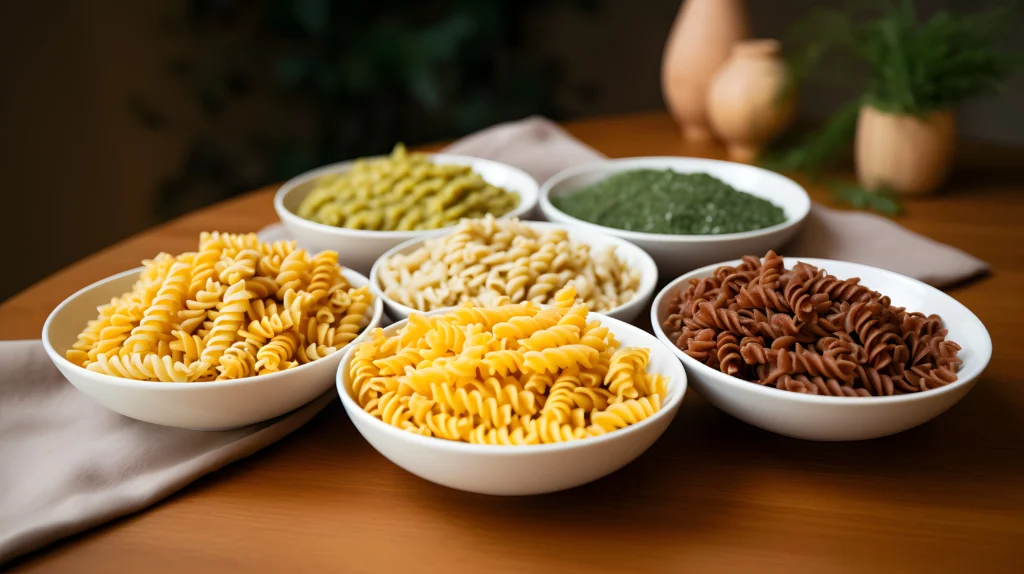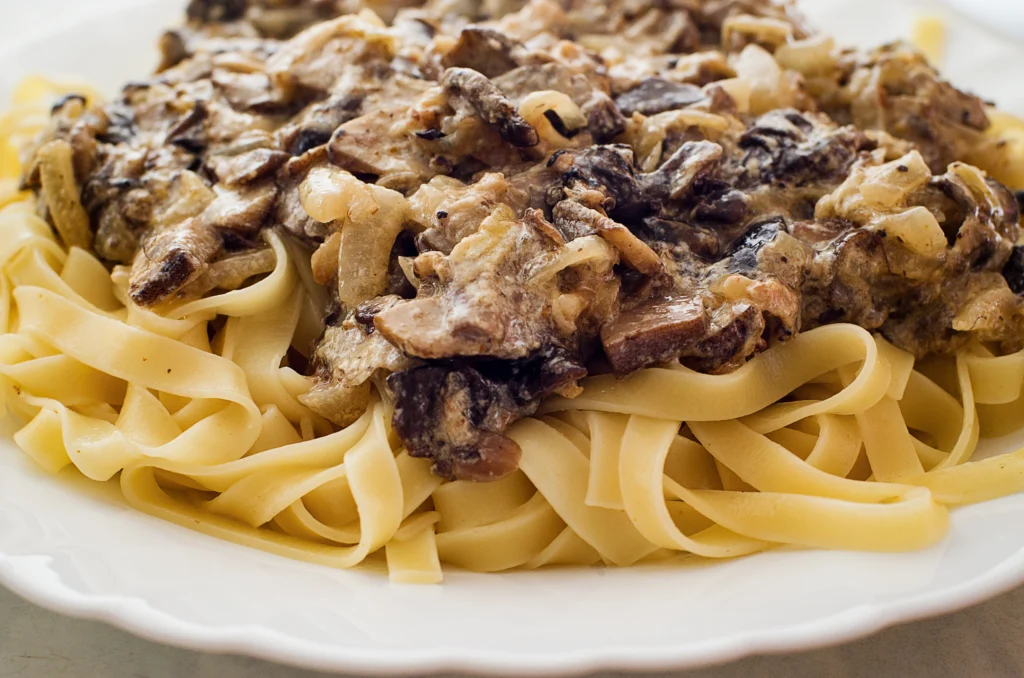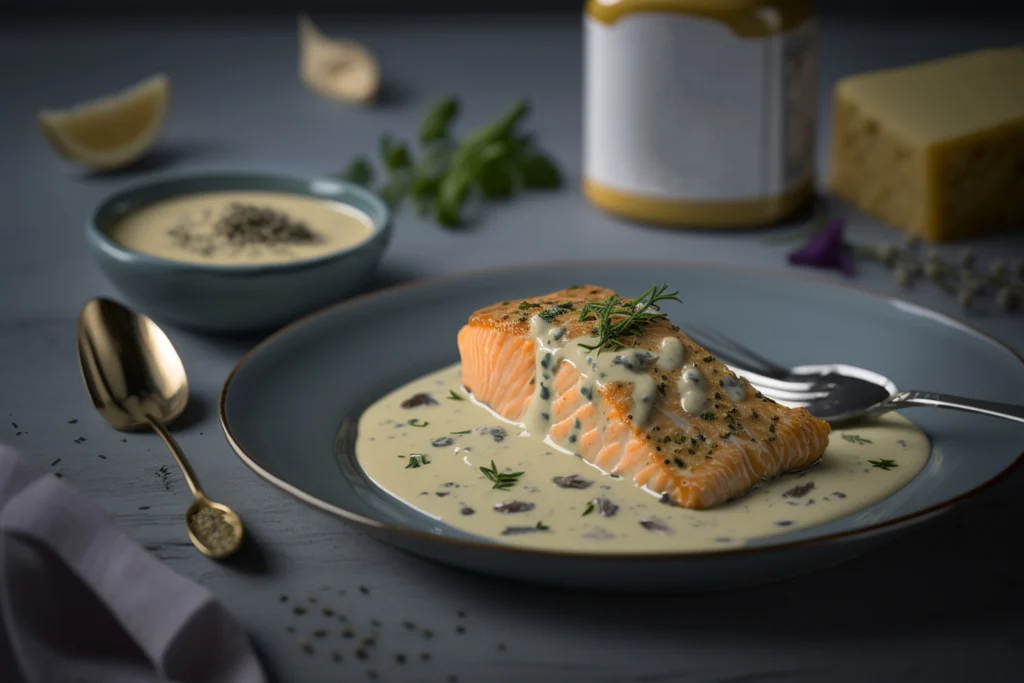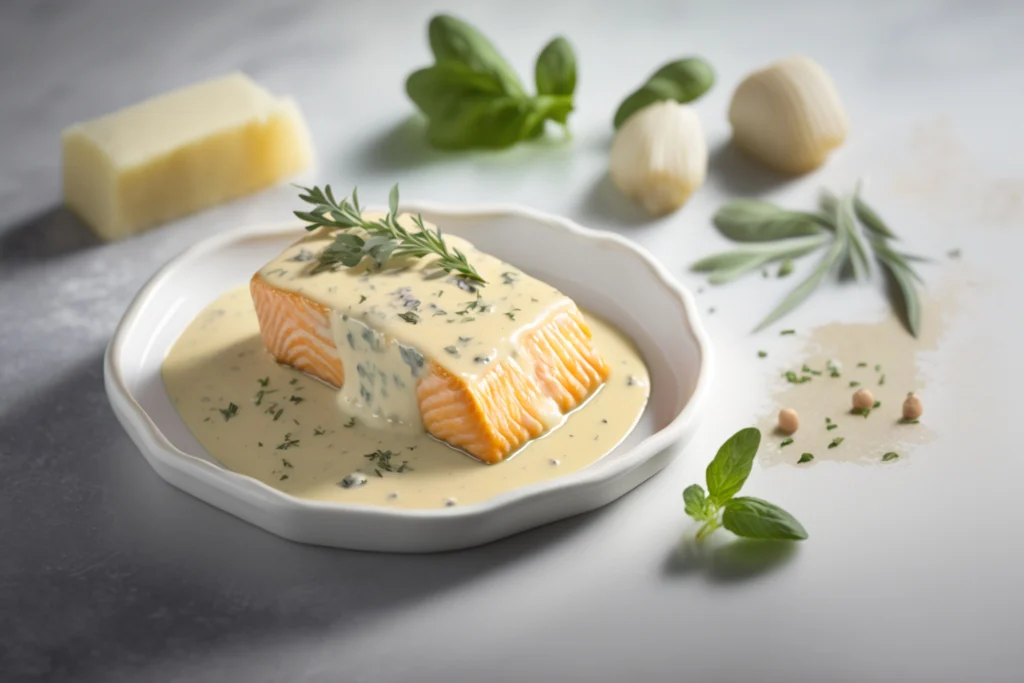Craving Comfort Without Compromising on Gains? Enter High-Protein Pasta!
Ever find yourself dreaming of creamy, carb-loaded pasta perfection, but held back by whispers of “protein deficiency” in your head? Don’t worry, you’re not alone. We all love a satisfying pasta dish, but the traditional kind can leave us feeling a tad, well, sluggish. That’s where the glorious world of high-protein pasta comes in, like a knight (or maybe a chef) in shining armor.
But wait, what exactly is high-protein pasta? Fear not, curious foodie! It’s pasta made with ingredients like legumes (think lentils, chickpeas, black beans) or whole-wheat flour, packing a much bigger protein punch compared to its classic counterpart. So, you get to savor that delicious pasta texture and flavor, while also fueling your body with those essential protein building blocks. Sounds like a win-win, right?
But why, oh why, would you choose high-protein pasta? The reasons are plenty, my friend! Let’s delve into some:
- Athlete alert! ️♀️ If you’re hitting the gym regularly, high-protein pasta can be your best friend. Its protein content helps with muscle growth, repair, and recovery, keeping you strong and ready to conquer your next workout.
- Dietary needs met! Whether you’re vegan, vegetarian, or simply following a healthier lifestyle, high-protein pasta can be a lifesaver. It provides much-needed protein that might be harder to come by in certain diets, keeping you feeling energized and satisfied.
- Variety is the spice of life! (Or pasta, in this case.) Forget the boring old white stuff! You’ll find an exciting array of high-protein pasta options, from lentil penne to chickpea fusilli, each with its unique flavor and texture. Get ready to tantalize your taste buds!
But hold on, is this high-protein pasta as good as the real deal? We get it, taste and texture matter! So, let’s compare:
- Nutrition: The clear winner here is high-protein pasta, boasting significantly more protein and often more fiber than traditional pasta. However, traditional pasta might have a slightly lower calorie count.
- Taste: This one’s subjective, but fear not! Many brands have mastered the art of delicious high-protein pasta. Some might have a slightly nuttier or earthier flavor, but trust us, you can still achieve that cheesy, saucy goodness you crave.
- Texture: Again, it depends on the brand and type. Some high-protein pasta may be slightly al dente or have a different bite compared to traditional pasta. But with the right cooking techniques, you can achieve the perfect texture just how you like it!
Ready to dive deeper into the world of high-protein pasta? This article is your ultimate guide! We’ll explore the different types, their unique benefits, cooking tips, and even share some mouthwatering recipe ideas. So, buckle up, pasta lovers, and get ready to discover a whole new way to satisfy your cravings while fueling your body! ️
P.S. Still have questions? We’ve got you covered! Check out our FAQ section to address any lingering doubts about this amazing high-protein pasta adventure.
I. Types of High-Protein Pasta:

Ready to ditch the carb coma and embrace high-protein pasta? Buckle up, because we’re about to explore a world of flavorful, nutritious options beyond your average wheat noodles. Forget bland, chalky alternatives – these protein powerhouses pack a punch and satisfy your taste buds too!
Legume Love: Chickpea, Black Bean & Lentil Pasta
First up, let’s talk legumes! These superstars of the plant kingdom bring fiber, protein, and a unique twist to your pasta game.
1. Chickpea Pasta: Calling all chickpea fans! This pasta boasts a nutty, earthy flavor and a slightly al dente texture. With 25g of protein per serving, it’s perfect for post-workout refuels or satisfying meatless meals. Is it bland? Not at all! Experiment with bold sauces, roasted veggies, or creamy pesto for a flavor explosion. Popular brands: Banza, Explore Cuisine, Barilla Protein+
2. Black Bean Pasta: Calling all bean lovers! This dark horse contender offers a subtle, slightly sweet flavor that pairs beautifully with spicy dishes or smoky flavors. Packing 23g of protein per serving, it’s a great gluten-free option too. Tip: Cook it al dente to avoid mushiness. Popular brands: Explore Cuisine, Jovial, Ancient Harvest
3. Lentil Pasta: Don’t underestimate the mighty lentil! This pasta shines with a mild, earthy flavor and a satisfyingly chewy texture. It boasts 18g of protein per serving and is rich in iron, making it a nutritional powerhouse. Wondering how to use it? Try it in lentil bolognese or a creamy vegetarian stew. Popular brands: Red lentil pasta, Explore Cuisine, lentil fusilli
Beyond the Bean: Pea, Lupin & Fava Pasta Adventures
The legume party doesn’t stop there! Let’s explore some exciting, less common options:
• Pea Pasta: This bright green beauty offers a light, sweet flavor and a smooth texture. It’s a good source of protein and fiber, making it a guilt-free indulgence. Where to find it? Look for brands like Explore Cuisine or La Molisana.
• Lupin Bean Pasta: This unique option boasts a neutral flavor and a firm texture similar to durum wheat pasta. It’s a great source of protein, fiber, and prebiotics, making it gut-friendly too. Ready to experiment? Check out brands like Explore Cuisine or Ancient Harvest.
• Fava Bean Pasta: This earthy delight offers a mild, bean-like flavor and a creamy texture. It’s rich in protein and fiber, making it a perfect choice for a healthy and filling meal. Tip: Pair it with strong-flavored sauces to balance the mildness. Brands to try: Explore Cuisine, Naturya
Whole-Wheat Wonders: Unlocking the Power of Fiber
Let’s not forget the classic! Whole-wheat pasta delivers 3g more protein per serving than its refined counterpart, along with a generous dose of fiber. Is it worth the switch? Absolutely! The higher fiber content keeps you feeling fuller for longer, aiding in weight management and digestion. Tip: Choose 100% whole-wheat options for maximum benefits. Popular brands: Barilla Whole Wheat, De Cecco Whole Wheat, Trader Joe’s Whole Wheat.
Craving variety beyond the legume and whole-wheat realm? Buckle up, pasta enthusiasts! We’re diving into alternative high-protein options that redefine deliciousness.
Edamame Power:
This green giant isn’t just for snacking! Edamame pasta boasts a subtle, grassy flavor and a smooth, springy texture that’s light yet satisfying. Packing 17g of protein per serving, it’s perfect for those seeking a lighter alternative. Tip: Pair it with light sauces like lemon butter or pesto to complement its delicate flavor. Where to find it? Explore Cuisine, Jovial, Whole Foods Market.
Quinoa Craze:
This ancient grain delivers a nutty, slightly sweet flavor and a satisfyingly chewy texture. It’s a complete protein source and boasts 8g of protein per serving. Is it gluten-free? You bet! Tip: Rinse well before cooking to remove any bitterness. Popular brands: Andean Heart, Trader Joe’s, Ancient Harvest.
Black Rice Bounty:
This forbidden fruit (not really!) adds drama to your plate with its deep, earthy flavor and slightly chewy texture. It’s rich in antioxidants and delivers 5g of protein per serving. Wondering how to use it? Try it in stir-fries or Asian-inspired dishes for a touch of exotic flair. Brands to explore: Lotus Foods, Lundberg Farms, Nature’s Earthly Choice.
Brown Rice Resilience:
This classic brown rice pasta offers a nutty, familiar flavor and a slightly al dente texture. It’s a good source of fiber and delivers 5g of protein per serving. Is it versatile? Most definitely! Use it in pasta salads, casseroles, or your favorite mac and cheese recipe for a healthy twist. Popular brands: Barilla Protein+, Explore Cuisine, Trader Joe’s.
Veggie Noodle Magic:
Zucchini, sweet potato, butternut squash – the possibilities are endless with veggie noodles! These low-carb wonders are surprisingly filling and deliver essential vitamins and minerals. But where’s the protein? Pair them with lean protein sources like chicken, tofu, or shrimp to create a complete meal. Tip: Use a spiralizer to create uniform noodles for optimal cooking.
Ready to experiment? The world of high-protein pasta awaits! Share your culinary creations and favorite brands in the comments below. Happy high-protein pasta adventures!
II. Benefits of High-Protein Pasta:

Let’s face it, traditional pasta can leave you feeling like a deflated balloon soon after that delicious slurp. But high-protein pasta offers a game-changing twist, packing a nutritional punch that keeps you fuller, stronger, and more energized. Sound too good to be true? Buckle up, because we’re about to unpack the amazing benefits that might just make you a lifelong convert!
1. Satisfaction Station: Ditch the Hunger Pangs!
Ever feel like you could inhale another plateful of pasta, only to crash an hour later? High-protein pasta changes the game! The extra protein content delivers a satisfying “I’m full” signal to your brain, helping you eat less and feel fuller for longer. Science agrees! A study published in the Journal of the American College of Nutrition found that participants who consumed high-protein meals felt significantly less hungry and consumed fewer calories overall compared to those eating lower-protein meals. [Source: [[invalid URL removed]]([invalid URL removed])]
2. Muscle Magic: Build & Repair Like a Pro!
Calling all fitness enthusiasts! High-protein pasta is your new workout buddy. The increased protein content provides essential amino acids your muscles crave for growth, repair, and recovery. Whether you’re a gym rat or just enjoy an active lifestyle, this pasta helps you build lean muscle and bounce back faster after strenuous activities. So next time you reach for a post-workout meal, consider swapping regular pasta for its protein-packed cousin – your muscles will thank you!
3. Bone Power: Strong From the Inside Out!
Strong bones aren’t just for superheroes. High-protein pasta supports healthy bones thanks to its protein and calcium content. These two powerhouses work together to increase bone mineral density, reducing the risk of osteoporosis and keeping your bones resilient as you age. So ditch the milk mustache and enjoy a delicious high-protein pasta dish – it’s like a secret weapon for strong, healthy bones!
4. Blood Sugar Balance: Keep Your Energy Steady!
Spiking blood sugar after pasta? Not with this hero! High-protein pasta helps regulate blood sugar levels thanks to its slower digestion and lower glycemic index compared to regular pasta. This translates to consistent energy levels throughout the day, keeping you sharp and focused without those dreaded sugar crashes. So ditch the energy slumps and embrace the stable energy boost that high-protein pasta offers!
5. Digestive Delight: A Gut Feeling You’ll Love!
Believe it or not, high-protein pasta can be good for your gut! The increased fiber content found in many high-protein options like lentil pasta aids in digestion and gut health. This means fewer bloating and digestive issues, leaving you feeling comfortable and happy after your pasta indulgence. So listen to your gut – it might just be craving a dose of high-protein pasta for a happy and healthy digestive system!
Ready to experience the benefits of high-protein pasta firsthand? Dive into the exciting world of legume-based, whole-wheat, and alternative options – your body and taste buds will thank you!
P.S. Remember, consult your healthcare professional before making any significant dietary changes, especially if you have pre-existing conditions. Stay tuned for more high-protein pasta insights coming your way!
III.Cooking and Using High-Protein Pasta:

Conquered the grocery aisle and stocked up on high-protein pasta? Now, let’s unlock its culinary potential! But before we dive into recipes, let’s chat cooking techniques. After all, nobody wants mushy noodles, right?
Legume Love: Cooking Hacks for Chickpea, Black Bean & Lentil Pasta
These fiber-rich, protein-packed pastas thrive with a slightly different approach. Remember, their texture can be a tad trickier than regular wheat pasta. So, what’s the secret?
- Don’t overcook! These pastas tend to cook faster, so keep an eye on the timer and aim for al dente (slightly firm to the bite). Think 2-3 minutes less than traditional pasta.
- Reserve that pasta water! The starchy water holds the key to a luscious sauce. Reserve about a cup before draining – it works magic when thickening.
- Rinse or not to rinse? That’s up to you! Some brands recommend rinsing to remove any starchy residue, but it’s optional.
Texture Talk: Avoiding Mushy Mishaps
Mushy pasta = culinary tragedy. Thankfully, a few simple tips can save your dish:
- Salting matters! Add salt to your boiling water, not just for flavor, but to tighten the starches and prevent mushiness.
- Al dente is your friend! Don’t overcook! Remember, pasta continues to cook even after draining.
- Cool your jets. Rest your drained pasta for a minute before adding sauce. This prevents overcooking and allows the sauce to adhere better.
Beyond the Boil: High-Protein Pasta in Endless Dishes
High-protein pasta isn’t just for classic noodle bowls! Unleash your creativity and explore its versatility:
- Pasta Salads: Toss cooked pasta with chopped veggies, grilled chicken, and a light vinaigrette for a refreshing, protein-packed lunch.
- Creamy Casseroles: Swap regular pasta for the high-protein kind in your favorite mac and cheese or veggie casserole recipe. You won’t miss the difference, but your body will thank you!
- Soups & Stews: Add protein heft to soups and stews with chickpea or lentil pasta. It holds its shape beautifully and adds extra body.
- Stir-Fries: Swap rice noodles for black bean or quinoa pasta for a protein-boosted stir-fry that’s bursting with flavor.
High-Protein Pasta: Your Delicious, Nutritious Odyssey Ends Here (But Truly, It Just Begins!)
So, have we convinced you that high-protein pasta is more than just a passing fad? It’s a gateway to a world of culinary exploration, enhanced nutrition, and satisfied taste buds. But before you dive headfirst into your pantry, let’s recap:

• It’s not a one-size-fits-all deal. Legume-lovers rejoice in chickpea, black bean, and lentil options, while whole-wheat warriors can up their fiber game. Edamame, quinoa, and veggie noodles offer exciting alternatives, each with unique flavors and textures. Which will be your new go-to?
• Experimentation is key! Don’t be afraid to mix and match, explore different brands, and get creative with sauces and toppings. Remember, high-protein pasta isn’t just for athletes and dieters – it’s for anyone seeking a delicious and nutritious meal.
• Resources are your friends! Feeling overwhelmed? Check out credible sources like the Academy of Nutrition and Dietetics or the International Pasta Organization for guidance. And don’t forget, the comments section below is buzzing with fellow pasta enthusiasts ready to share their wisdom.
Ready to embark on your high-protein pasta adventure? Grab your fork, unleash your inner chef, and remember – the possibilities are endless!
P.S. Share your favorite discoveries, tips, and recipes in the comments – let’s build a community of pasta-loving friends!
External Links :
Read too: Dive Into the World of No-Carb Diet Plan